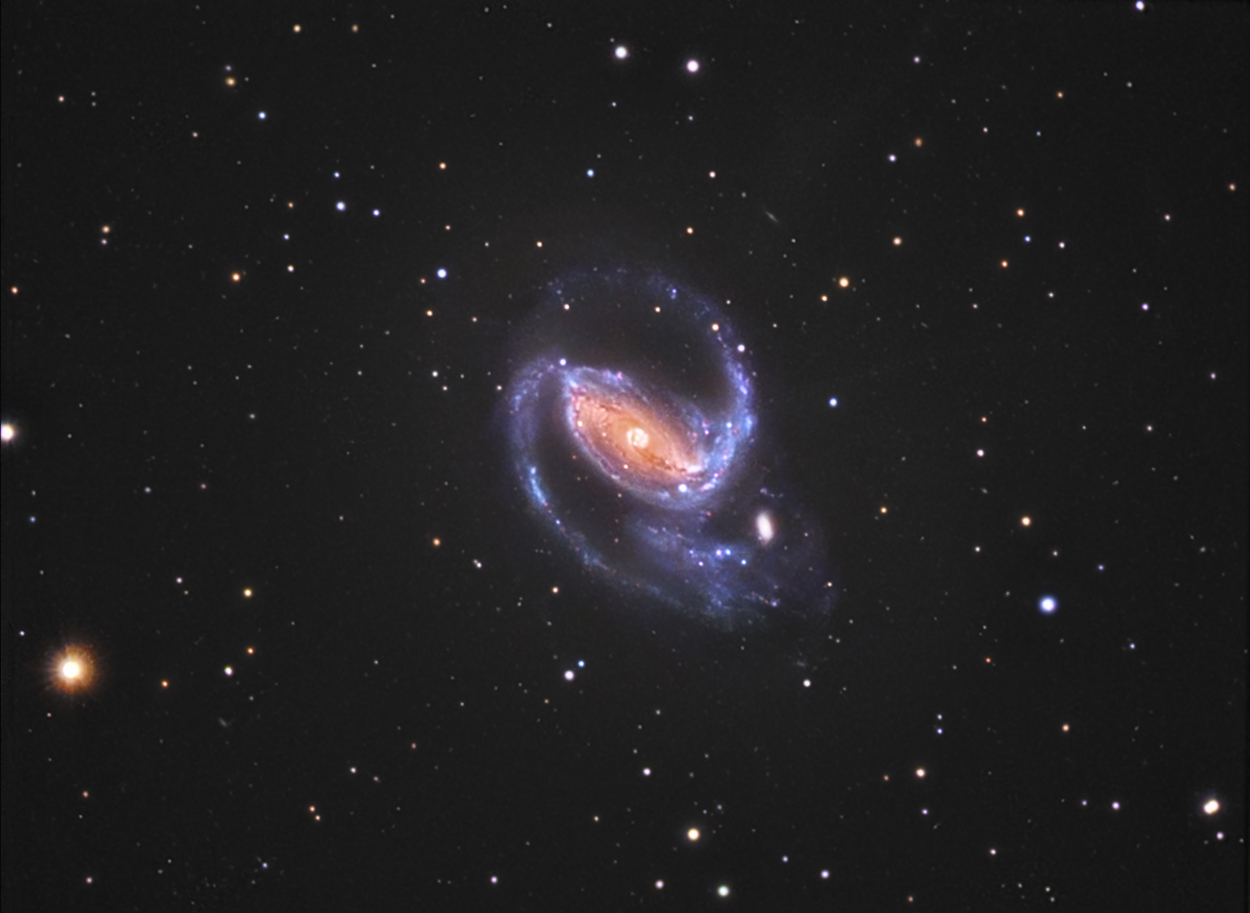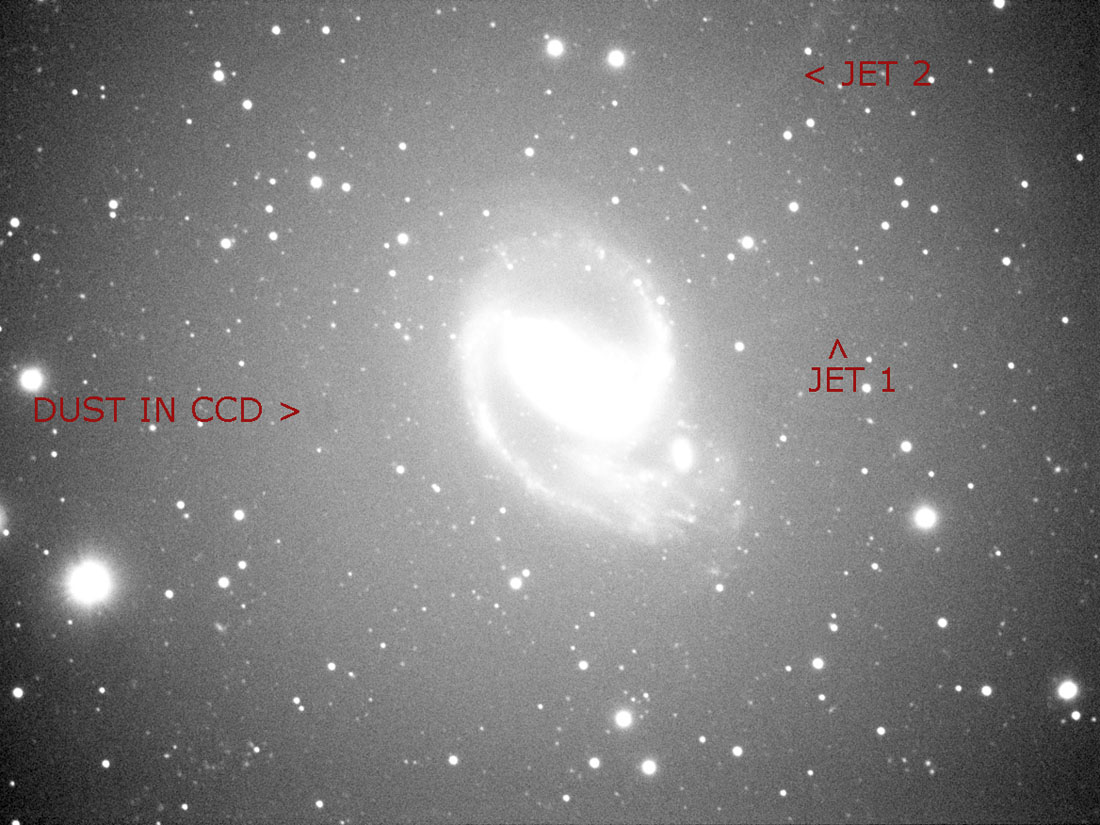
| HOME |
NGC 1097 BARRED GALAXY IN FORNAX
SEYFERT TYPE
(ra: 02.46,3/ dec -30:17)

December 2009, Mercedes Observatory Buenos Aires, Argentina
DATA
TYPE: Seyfert Galaxy
Apparent Magnitude: 9,3
Apparent Diameter: 9.4 x 6.6 arc minutes
DISTANCE: 45 Millions lights years
IMAGE INFORMATION
SCOPE: Celestron C8 SCT working at f5.1
CAMERA: SXVF H9
GUIDING: William Optics Zenithstar 66 with WO 0.8 x fr/ff
IMAGE ACQUISITION: AstroArt 3.0 - Control Interface 3.72 plug in
FILTERS: Astronomik Type II - Atik Filter Wheel
SKY CONDITIONS: rural skies - transparency and seeing good - 1/4 Moon
EXPOSURES: LRGB (90,30,30,30)
PROCESSING: Images Plus, CCD Sharp, Photoshop CS2
OBJECT DESCRIPTION AND IMAGE SESSION
Paragraph courtesy and with the permission of Robert Gendler
NGC 1097 is a bright Seyfert Galaxy with an active nucleus. This Galaxy is also known because it has the longest optical Jets of any known galaxy. The Jets have a very low surface brightness and are only visible in deep exposure using aggressive data manipulation. Jets were discovered by Halton Arp in 1975 and their nature has remained controversial. (*)
Since the four jets appear to radiate from NGC 1097's active nucleus, it was natural that early interpretations invoked an "ejection" phenomenon related to its active galactic nucleus similar to M87's jet. Two papers ( Wherle, et. al. 1997, AJ) (Higdon, et all. 2003, AJ) investigated the nature of the jets and came to new conclusions based on X-ray and radio wave data: 1) the jets have little neutral hydrogen 2) the colors are very blue, consistent with starlight 3) morphologically, the jets are different than the jets of M87 and not likely due to an "ejection" phenomenon. It was proposed that the jets of NGC 1097 are likely the result of an ancient merger event in the history of NGC 1097 in which a dwarf companion galaxy was cannibalized and incorporated into it's disk. The apparent “X” pattern of these jets is highly consistent with computer simulations of such an event.
There are in fact four Jets forming an X structure. In the image below only two are shown. Most likely the 1/4 Crescent Moon washed out Jets 3 and 4 which are located in the other side of the Galaxy. I noticed that there might be some other jets (suspects) close to Jet 1; but unfortunately the image is not deep enough to reveal that.
(*) See Robert Gendler Complete essay and picture on NGC 1097 Jets here
JETS IN NGC 1097
GALAXY IN FORNAX
